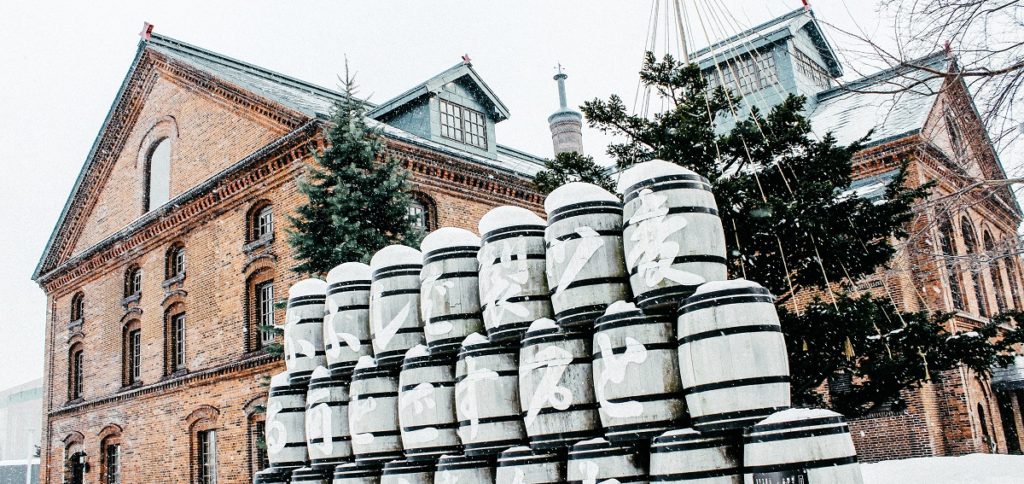The Japanese beer market

The “Land of the Rising Sun” Japan has been one of the largest Asian and global beer markets for a long period. Dominated by five domestic producers, it is also one of the toughest markets for new entrants.
Japanese economy has improved over the last four years, resulting in increasing GDP and growth in the overall beverage market. However, the beer market has continued to diminish due to a higher liquor tax, shifting trends in alcoholic beverage product sales, and a shrinking national population. Japanese brewers are also under pressure from imported beers as well as a wider availability and popularity of spirits and wines.
Declining consume of Japanese beer
In 2017, Japan consumed a total of about 51,16 million hectoliters of beer according to Kirin Beer University Report of 2018. The overall beer consumption in the country declined by 2.60 percent as compared to the year 2016, when Japanese consumed 52,51 million hectoliters of beer. 2017 was the ninth straight year of declining consumption of beer in Japan.
In absolute volumes, Japan is the seventh largest beer consuming country, globally, despite its small size. Though, in terms of per capita consumption of beer, Japan was at 50th place globally, with a per capita consumption of 40.1 liters of beer.
Despite the declining trend in consumption, the beer market (including Happoshu, a Japanese low-malt beer) still has a forty percent share among all alcoholic beverages.
Per capita beer consumption in 2016 was 41.4 liters. The vast majority of beer consumed remains light pilsner.
Beer and beer like beverages are classified in three categories in Japan. In order to understand the Japanese beer market, it is important to understand the terminology in practice in the country. Beer, Happoshu (a Japanese low-malt beer) and New Genre are the three categories, which are classified in beer and beer like beverages in the country.
Asahi Beer, with a market share of 37.4 percent of the total share of the beer market was the largest brewer in the year 2018. The company, which recently acquired the premium beer and cider business of the United Kingdom’s Fuller, Smith & Turner P.L.C., has been one of the most dominant brewer in the country for quite long.
Beer and beer like beverages
These three categories have emerged in the Japanese beer industry due to the country’s alcohol tax system, which divides beer-like malt beverages into four categories based on malt content: 67 percent or higher, 50 to 67 percent, 25 to 50 percent, and less than 25 percent.

An alcoholic beverage based on malt is classified as beer if the weight of malt extract exceeds 67 percent of the fermentable ingredients. Since Suntory’s introduction in 1994 of Hop’s Draft, containing 65 percent malt, Happoshu has become quite popular in Japanese beer industry.
The Big 5 (Asahi, Kirin, Suntory, Sapporo, Orion), as they are called in the Japanese beer industry, control the majority of beer business in Japan, leaving very small room for competitors and foreign brewers. Japan’s five domestic beer makers account for more than 92 percent of the Japanese beer market in 2018. Beer brands from these big five producers are found in almost every bar, supermarket, and convenience store across Japan.
Asahi Group Holdings Ltd. held 37.6 percent of the market share, followed by Kirin Holdings Co. Ltd. at 30.3 percent, Suntory Holdings Ltd. at 15.3 percent, and Sapporo Holdings Ltd. at 10.2 percent. Orion Breweries Ltd., based
on the southern island of Okinawa, had about 0.8 percent of the total Japanese beer market. Asahi’s Super Dry and Kirin are also being pushed greatly across export markets, now found widely in Europe and the US.
If you’d like to experience for yourself the particular character only Japanese beer can offer, visit drinktec 2021. Throughout the expansive exhibition space, different beers from all parts of the world, can be sampled free of charge every day of the trade fair. drinktec will be held from September 13 to 17, 2021, on the trade fair grounds in Munich.
This article is powered by Verlag W. Sachon.
